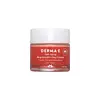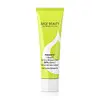What's inside
What's inside
 Key Ingredients
Key Ingredients

 Benefits
Benefits

 Concerns
Concerns

 Ingredients Side-by-side
Ingredients Side-by-side

Water
Skin ConditioningGlycerin
HumectantCaprylic/Capric Triglyceride
MaskingStearic Acid
CleansingCetyl Alcohol
EmollientGlyceryl Stearate Citrate
EmollientGlyceryl Stearate
EmollientPanthenol
Skin ConditioningDimethicone
EmollientSimmondsia Chinensis Seed Oil
EmollientTocopheryl Acetate
AntioxidantXanthan Gum
EmulsifyingCetearyl Glucoside
EmulsifyingAllantoin
Skin ConditioningPinus Pinaster Bark Extract
AntioxidantSodium Hydroxide
BufferingBakuchiol
AntimicrobialAstaxanthin
Skin ConditioningLavandula Angustifolia Oil
MaskingSalvia Officinalis Oil
MaskingLimonene
PerfumingPolysorbate 20
EmulsifyingRetinol
Skin ConditioningEucalyptol
PerfumingCopaifera Reticulata Balsam Oil
PerfumingMentha Viridis Leaf Oil
AstringentBeta-Caryophyllene
MaskingCamphor
MaskingCitral
PerfumingL-Alpha-Pinene
PerfumingGeranyl Acetate
PerfumingAnthemis Nobilis Flower Oil
MaskingL-Beta-Pinene
PerfumingMelaleuca Alternifolia Leaf Oil
AntioxidantIsobornyl Acetate
MaskingNeryl Acetate
PerfumingMenthone
PerfumingBenzyl Acetate
MaskingCitronellal
MaskingTerpineol
MaskingMenthyl Acetate
MaskingPhenoxyethanol
PreservativePotassium Sorbate
PreservativeEthylhexylglycerin
Skin ConditioningWater, Glycerin, Caprylic/Capric Triglyceride, Stearic Acid, Cetyl Alcohol, Glyceryl Stearate Citrate, Glyceryl Stearate, Panthenol, Dimethicone, Simmondsia Chinensis Seed Oil, Tocopheryl Acetate, Xanthan Gum, Cetearyl Glucoside, Allantoin, Pinus Pinaster Bark Extract, Sodium Hydroxide, Bakuchiol, Astaxanthin, Lavandula Angustifolia Oil, Salvia Officinalis Oil, Limonene, Polysorbate 20, Retinol, Eucalyptol, Copaifera Reticulata Balsam Oil, Mentha Viridis Leaf Oil, Beta-Caryophyllene, Camphor, Citral, L-Alpha-Pinene, Geranyl Acetate, Anthemis Nobilis Flower Oil, L-Beta-Pinene, Melaleuca Alternifolia Leaf Oil, Isobornyl Acetate, Neryl Acetate, Menthone, Benzyl Acetate, Citronellal, Terpineol, Menthyl Acetate, Phenoxyethanol, Potassium Sorbate, Ethylhexylglycerin
Aloe Barbadensis Leaf Juice
Skin ConditioningButyrospermum Parkii Butter
Skin Conditioning3-O-Ethyl Ascorbic Acid
Skin ConditioningHelianthus Annuus Seed Oil
EmollientMyristyl Myristate
EmollientPentylene Glycol
Skin ConditioningGlycerin
HumectantNiacinamide
SmoothingGlyceryl Stearate
EmollientGlyceryl Stearate Citrate
EmollientTocopherol
AntioxidantHibiscus Esculentus Fruit Extract
Skin ConditioningHydrolyzed Viola Tricolor Extract
Skin ProtectingInulin
Skin ConditioningBorago Officinalis Seed Oil
EmollientXanthan Gum
EmulsifyingErythritol
HumectantLeuconostoc/Radish Root Ferment Filtrate
AntimicrobialLavandula Hybrida Oil
EmollientLavandula Angustifolia Oil
MaskingTriethyl Citrate
MaskingCitrus Aurantium Dulcis Flower Oil
AstringentLimonene
PerfumingAloe Barbadensis Leaf Juice, Butyrospermum Parkii Butter, 3-O-Ethyl Ascorbic Acid, Helianthus Annuus Seed Oil, Myristyl Myristate, Pentylene Glycol, Glycerin, Niacinamide, Glyceryl Stearate, Glyceryl Stearate Citrate, Tocopherol, Hibiscus Esculentus Fruit Extract, Hydrolyzed Viola Tricolor Extract, Inulin, Borago Officinalis Seed Oil, Xanthan Gum, Erythritol, Leuconostoc/Radish Root Ferment Filtrate, Lavandula Hybrida Oil, Lavandula Angustifolia Oil, Triethyl Citrate, Citrus Aurantium Dulcis Flower Oil, Limonene
Ingredients Explained
These ingredients are found in both products.
Ingredients higher up in an ingredient list are typically present in a larger amount.
Glycerin is already naturally found in your skin. It helps moisturize and protect your skin.
A study from 2016 found glycerin to be more effective as a humectant than AHAs and hyaluronic acid.
As a humectant, it helps the skin stay hydrated by pulling moisture to your skin. The low molecular weight of glycerin allows it to pull moisture into the deeper layers of your skin.
Hydrated skin improves your skin barrier; Your skin barrier helps protect against irritants and bacteria.
Glycerin has also been found to have antimicrobial and antiviral properties. Due to these properties, glycerin is often used in wound and burn treatments.
In cosmetics, glycerin is usually derived from plants such as soybean or palm. However, it can also be sourced from animals, such as tallow or animal fat.
This ingredient is organic, colorless, odorless, and non-toxic.
Glycerin is the name for this ingredient in American English. British English uses Glycerol/Glycerine.
Learn more about GlycerinGlyceryl Stearate is a mix of glycerin and stearic acid.
It is used to stabilize the mixing of water and oil ingredients. By preventing these ingredients from separating, it can help elongate shelf life. It can also help thicken the product's texture.
As an emollient, it helps soften skin and supports barrier-replenishing ingredients.
In cosmetics, Glyceryl Stearate is often made from vegetable oils or synthetically produced.
This ingredient may not be fungal-acne safe
Fun fact: The human body also creates Glyceryl Stearate naturally.
Learn more about Glyceryl StearateGlyceryl Stearate Citrate is a citric acid ester of glyceryl stearate.
It is an emulsifier, emollient, and a surfactant.
Emulsifiers help stabilize a product. It does this by preventing certain ingredients from separating. Common ingredients include oils and water, which do not mix naturally. Emulsifiers have properties that help keep ingredients such as these together.
Emollients help soothe and soften the skin. They do this by creating a protective film on your skin. This barrier helps trap moisture and keeps your skin hydrated. Emollients may be effective at treating dry or itchy skin.
Surfactants help gather oils, dirt, and other pollutants from the skin. This helps them to be easily rinsed away.
Learn more about Glyceryl Stearate CitrateLavandula Angustifolia Oil is more commonly known as lavender essential oil. It is considered a fragrancing ingredient.
Lavender imparts a famous scent. While the smell is lovely, this ingredient and may sensitize skin in topical products. This is because about 85% of the oil is made up of linalool and linalyl acetate.
When exposed to air, these two compounds become strong allergens. This ingredient exhibits cytotoxicity at low concentrations; amounts of 0.25% have been shown to damage skin cells.
A study from Japan found this ingredient caused lavender sensitivity after widespread exposure.
Lavender essential oil has some antimicrobial, antibacterial, and anti-inflammatory properties. However, the cons of this ingredient may outweight the pros.
More research is needed to confirm lavender essential oil's effects when used in aromatherapy.
Lavandula Angustifolia is known as the English Lavender and famous for creating purple fields in Provence, France.
Learn more about Lavandula Angustifolia OilLimonene is a fragrance that adds scent and taste to a formulation.
It's found in the peel oil of citrus fruits and other plants such as lavender and eucalyptus. The scent of limonene is generally described as "sweet citrus".
Limonene acts as an antioxidant, meaning it helps neutralize free radicals.
When exposed to air, oxidized limonene may sensitize the skin. Because of this, limonene is often avoided by people with sensitive skin.
The term 'fragrance' is not regulated in many countries. In many cases, it is up to the brand to define this term. For instance, many brands choose to label themselves as "fragrance-free" because they are not using synthetic fragrances. However, their products may still contain ingredients such as essential oils that are considered a fragrance.
Learn more about LimoneneXanthan gum is used as a stabilizer and thickener within cosmetic products. It helps give products a sticky, thick feeling - preventing them from being too runny.
On the technical side of things, xanthan gum is a polysaccharide - a combination consisting of multiple sugar molecules bonded together.
Xanthan gum is a pretty common and great ingredient. It is a natural, non-toxic, non-irritating ingredient that is also commonly used in food products.
Learn more about Xanthan Gum